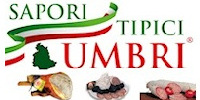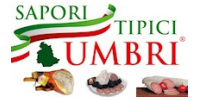Our network:
Wednesday 16 April 2025
General Information
The lake: extension, morphological and hydro-geological characteristics
With its 125km2 surface, Lake Trasimene is the largest stretch of inland water in the Italian peninsula. The lake is 257 metres above sea level and its basin extends for 396 km2 , while the overall area of the lake covers some 125 km2.
The water depth varies between 3 and 6 metres, for an average depth of 4.7 metres. The waters are naturally replaced in their entirety once every 22 years. Surrounded by hills on three of its sides, the colours of the lake vary from green to cream. Its banks are densely populated with reeds.
Three islands are present on the lake. The Polvese island belongs to the local administration of Perugia. The Isola Maggiore covers an area of 23.2 hectaires and is permanently inhabited, while the Isola Minore is totally uninhabited and has remained intact through the course of the centuries.
Flora and fauna
The vegetation growing in and around the lake is extremely luxuriant and typical of marshy areas. The banks are covered by imposing areas of ilex, bay oak, oak and water lilies. Olives and pines grow on the islands alongside acquatic plants.
Fish of the carp family populate the waters, along with perch.
A considerable variety of bird life is present on Lake Trasimene, including herons, stalks, garzettes, wild swans, cormorans, biterns, widgeons, millards, wild goose and stilt-plovers. Cormorans have grown so numerous in recent years however that they risk upsetting the ecological balance of the lake. The same problem is being posed by wild boar and nutrias, that have so grown in number to warrant culling.
Fishing
Varied and plentiful, fishing has been for many centuries the main source of income for the population inhabiting the banks of Lake Trasimene, who trade in fish and products derived from it. The many species present in the lake are used both for professional and sport fishing that is carried out both with natural and artificial bait. Pike, tench, eel, carp and stilts are just some of the species present on this lake. The natural food chain has however been upset by the introduction of the North American cat fish, whose voracity and proliferation has caused other species to become less numerous.
Fishing is limited according to the regulations imposed by the authority of Perugia.
Sights: places of interest for tourists
Lake Trasimene and its surrounding lands were once part of the Etruscan domains. Remains of this civilisation are still visible today, particularly in the area around Castiglione del Lago. The area was later colonised by the Romans, who had a profound influence on the lake. With their extraordinary engineering skills, the Romans in fact built the first emissary of the lake to regulate the water level and avoid flooding. But the clearest traces of past civilisations that remain to us today are from the Middle Ages, when a series of castles and fortified towns sprung up in the surrounding hills. Passignano, Monte del Lago and Castiglione del Lago have all remained virtually intact through the centuries. The remains of two castles survive on the Polvese and Maggiore islands. The manor of Castiglione del Lago is in better condition and is connected via a long covered walkway to the ducal palace of Ascanio della Cornia.
How to get here
By car the lake can be reached from the A1 motorway, exit Valdichiana and down the E45 highway. Train routes from Rome run via Terontola to Florence, or from Ancona via Foligno towards Terontola.
With its 125km2 surface, Lake Trasimene is the largest stretch of inland water in the Italian peninsula. The lake is 257 metres above sea level and its basin extends for 396 km2 , while the overall area of the lake covers some 125 km2.
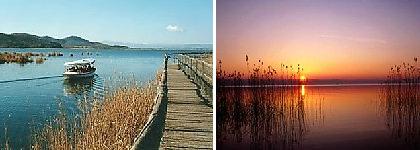 |
The water depth varies between 3 and 6 metres, for an average depth of 4.7 metres. The waters are naturally replaced in their entirety once every 22 years. Surrounded by hills on three of its sides, the colours of the lake vary from green to cream. Its banks are densely populated with reeds.
Three islands are present on the lake. The Polvese island belongs to the local administration of Perugia. The Isola Maggiore covers an area of 23.2 hectaires and is permanently inhabited, while the Isola Minore is totally uninhabited and has remained intact through the course of the centuries.
Flora and fauna
The vegetation growing in and around the lake is extremely luxuriant and typical of marshy areas. The banks are covered by imposing areas of ilex, bay oak, oak and water lilies. Olives and pines grow on the islands alongside acquatic plants.
Fish of the carp family populate the waters, along with perch.
A considerable variety of bird life is present on Lake Trasimene, including herons, stalks, garzettes, wild swans, cormorans, biterns, widgeons, millards, wild goose and stilt-plovers. Cormorans have grown so numerous in recent years however that they risk upsetting the ecological balance of the lake. The same problem is being posed by wild boar and nutrias, that have so grown in number to warrant culling.
Fishing
Varied and plentiful, fishing has been for many centuries the main source of income for the population inhabiting the banks of Lake Trasimene, who trade in fish and products derived from it. The many species present in the lake are used both for professional and sport fishing that is carried out both with natural and artificial bait. Pike, tench, eel, carp and stilts are just some of the species present on this lake. The natural food chain has however been upset by the introduction of the North American cat fish, whose voracity and proliferation has caused other species to become less numerous.
Fishing is limited according to the regulations imposed by the authority of Perugia.
Sights: places of interest for tourists
Lake Trasimene and its surrounding lands were once part of the Etruscan domains. Remains of this civilisation are still visible today, particularly in the area around Castiglione del Lago. The area was later colonised by the Romans, who had a profound influence on the lake. With their extraordinary engineering skills, the Romans in fact built the first emissary of the lake to regulate the water level and avoid flooding. But the clearest traces of past civilisations that remain to us today are from the Middle Ages, when a series of castles and fortified towns sprung up in the surrounding hills. Passignano, Monte del Lago and Castiglione del Lago have all remained virtually intact through the centuries. The remains of two castles survive on the Polvese and Maggiore islands. The manor of Castiglione del Lago is in better condition and is connected via a long covered walkway to the ducal palace of Ascanio della Cornia.
How to get here
By car the lake can be reached from the A1 motorway, exit Valdichiana and down the E45 highway. Train routes from Rome run via Terontola to Florence, or from Ancona via Foligno towards Terontola.
| Have a comment or question? Send a message to our editors at: contactus@perugiaonline.com |
| Up |

General information
• General travel tips • Weather information
• Tourist guides and visit guided in Umbria
• Local opening times
• Useful - emergency numbers
• Perugia for living
• Hospital Perugia
• Hospital Foligno
• Real Estates and Home Builders
• Homes for sale, property, apartments selling
Transport in town
• Traffic restrictions • Parking
• Buses & Taxis
• Town map
• How to reach Perugia by car
• How to reach Perugia by train
• How to reach Perugia by Air
Transport out of town
• Airport • Trains
• Rent a car
• Local and national buses

Where to Stay
OFFERS & LAST MINUTE
Where to eat and drink
• Restaurants and Trattorie • Pizzerie
• Pubs
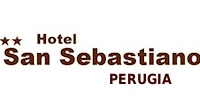
Art and monuments
• Rocca Paolina • Ipogeo dei Volumni
• Etruscan town walls
• Palazzo dei Priori
• Porta Sant' Angelo
• Acqueduct
• Maesta delle Volte
• Collegio della Mercanzia
• Collegio del Cambio
• Fontana Maggiore
Art and religion
• Cathedral of San Lorenzo • Church of San Filippo Neri
• Oratory of San Bernardino
• Church of Sant' Ercolano
• Church of San Domenico
• Church of San Pietro

Museums and galleries
• Historic Museum Perugina • Galleria Nazionale dell'Umbria
• Museo Archeologico
• Palazzo della Penna
• Accademia delle Belle Arti
• Museo di Storia Naturale
• Museo Capitolare San Lorenzo
• Cappella di San Severo
Art and tourist attractions
• Palazzo Capitano del Popolo • Botanical garden
Booking.com
• MUSIC • EXHIBITIONS • COURSES • COMPETITIONS & PRIZES • FOLKLORE • EVENTS • DANCE & BALLET • MEETING & CONFERENCES • CONGRESS • KIDS • Typical Products FAIRS • THEATRE • SPORT EVENTS • LEISURE • LIFESTYLE • WHERE TO DINNER • NIGHTLIFE • CURIOSITY • VIDEO • BOOKS
• Italian language courses
• The Amusement Park : La Citta della Domenica
• Golfing holidays
• Nature Walks Around Cascia:To Cascia via the Scoglio di Santa Rita, the vast rocky pyramid that dominates the village of Roccaporena
• Cooking courses
• Shopping in Perugia
• Perugia Hotel Tevere
• Assisi Villa Giulia
• The islands - boat tours
• Eating well by Lake Trasimene
• Bathing - Lake Trasimene
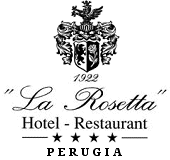
• Wellness in Umbria - Perugia area
• Weddings in Umbria
• Honeymooning in Umbria
• Charme & Relax in Umbria
• Home in Umbria
• Cooking schools
• University for Foreigners Perugia
• Design, Fashion, Visual arts and Communication Schools
• Perugia for Studying
• University
• Italian Army Foreign Language School
• Arts, Music, etc.
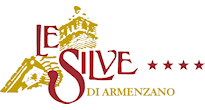
• Handicraft
• Mushrooms
• Truffles
• Extra Virgin Olive Oil
• Wine
• Oleum Evo online selling
• Sapori Tipici Italiani buy now
• From the forest

Perugia News
Sorry, non news - i soggetti interessati a far conoscere le iniziative che avranno luogo nell'ambito del territorio comunale sono invitati a darne comunicazione con congruo anticipo utilizzando l'email redazione@umbriaonline.com
Regional News by Category
• MUSIC • EXHIBITIONS • COURSES • COMPETITIONS & PRIZES • FOLKLORE • EVENTS • DANCE & BALLET • MEETING & CONFERENCES • CONGRESS • KIDS • Typical Products FAIRS • THEATRE • SPORT EVENTS • LEISURE • LIFESTYLE • WHERE TO DINNER • NIGHTLIFE • CURIOSITY • VIDEO • BOOKS
What to see & do
• Itineraries & Museums in Umbria • Italian language courses
• The Amusement Park : La Citta della Domenica
• Golfing holidays
• Nature Walks Around Cascia:To Cascia via the Scoglio di Santa Rita, the vast rocky pyramid that dominates the village of Roccaporena
• Cooking courses
• Shopping in Perugia
• Perugia Hotel Tevere
• Assisi Villa Giulia
Lake Trasimeno
• General Information • The islands - boat tours
• Eating well by Lake Trasimene
• Bathing - Lake Trasimene

SPECIALS in Umbria - Italy
• Gift Ideas for traveling • Wellness in Umbria - Perugia area
• Weddings in Umbria
• Honeymooning in Umbria
• Charme & Relax in Umbria
• Home in Umbria
Education
• Language schools for Foreigners • Cooking schools
• University for Foreigners Perugia
• Design, Fashion, Visual arts and Communication Schools
• Perugia for Studying
• University
• Italian Army Foreign Language School
• Arts, Music, etc.

Typical products
• Norcia Ham IGP • Handicraft
• Mushrooms
• Truffles
• Extra Virgin Olive Oil
• Wine
Flavours to taste
• Salumi Tipici Italiani online selling • Oleum Evo online selling
• Sapori Tipici Italiani buy now
• From the forest
